In the intricate structures of automotive components and high-precision electronic devices, Polyoxymethylene (POM), also known as “acetal” or “rival steel,” stands out in the realm of engineering plastics for its remarkable “self-lubricating” property, earning it the title “the gold standard among engineering plastics.”
As the fifth most consumed engineering plastic globally, how does POM push beyond the performance limits of traditional materials? This article delves into the properties and applications of POM, unraveling the scientific secrets behind its success.
What Is POM Material?
POM material, commonly called acetal (chemically known as Polyoxymethylene), is a high-molecular-weight material formed by the polymerization of formaldehyde molecules. As a semi crystalline thermoplastic, it is often referred to as “acetal” or “rival steel.”
Polyoxymethylene maintains its high level of strength, abrasion resistance and stiffness within a wide temperature range. In addition, the material absorbs very little water.
Around 1955, DuPont in the United States developed a homopolymer of formaldehyde through polymerization. Following polyamide, POM emerged as another engineering plastic with outstanding comprehensive properties.
It boasts excellent mechanical attributes—such as high strength, modulus, wear resistance, toughness, fatigue resistance, and creep resistance—along with superior electrical insulation, solvent resistance, and processability, making it one of the five major general-purpose engineering plastics.
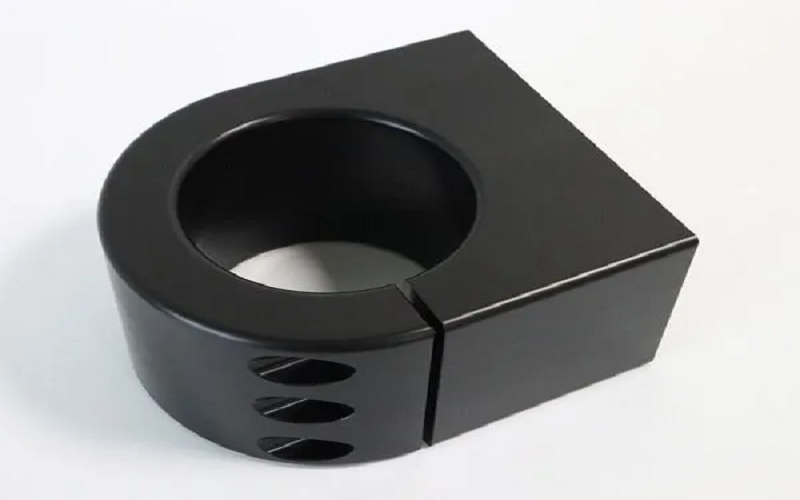
Types Of POM Plastic
Based on the differences in the chemical structure of the molecular chain, polyoxymethylene (POM) can be classified into two types: homopolymer POM and copolymer POM. The key distinctions between them are as follows:
POM H exhibits higher density, crystallinity, and melting point, but it has poor thermal stability, a narrow processing temperature range (approximately 10°C), and slightly lower resistance to acids and alkalis.
In contrast,POM C has lower density, crystallinity, melting point, and strength, yet it offers better thermal stability, resistance to decomposition, a broader processing temperature range (approximately 50°C), and improved stability against acids and alkalis.

Key Properties Of POM Material
Polyoxymethylene, commonly known as POM or acetal plastic, is a high-performance thermoplastic known for its exceptional mechanical properties, dimensional stability, and ease of fabrication.
Mechanical Properties
POM’s tensile strength can reach up to 70 MPa, with a modulus of rigidity at 2650 MPa, making its mechanical properties comparable to metals like zinc and aluminum, thus serving as an ideal alternative to metal materials.
Under alternating loads, such as in gear movements, its fatigue strength remains at 35 MPa (over 10^7 cycles), and its creep value under a 21 MPa load is merely 2.3% to 3% over 3000 hours.
The low coefficient of friction for POM is 0.21, allowing it to reduce wear without additional lubrication, making it suitable for friction parts like gears and bearings.
Thermal Properties
POM’s long-term heat resistance is not high, but it can withstand temperatures up to 160°C for short periods.
Homopolymer POM can endure short-term heat exposure over 10°C higher than copolymer POM. However, for long-term heat resistance, copolymer POM surpasses homopolymer POM by about 10°C. It can be used continuously within a temperature range of -40°C to 100°C.
Chemical Properties
POM exhibits limited resistance to strong alkalis and oxidizing agents but demonstrates moderate stability against olefins and weak acids.
Its chemical resistance is impressive, with excellent tolerance to hydrocarbons, alcohols, aldehydes, ethers, gasoline, lubricants, and weak alkalis. Even at elevated temperatures, POM maintains considerable chemical stability, making it a reliable choice for demanding environments.
Electrical Properties
POM exhibits good electrical insulation properties, remaining largely unaffected by temperature and humidity. Its dielectric constant and dielectric loss show minimal variation across a wide range of temperatures, humidity levels, and frequencies.
Additionally, POM has outstanding arc resistance and can maintain this property even at high temperatures.
The dielectric strength of POM is related to its thickness, measuring 82.7 kV/mm at a thickness of 0.127 mm and 23.6 kV/mm at a thickness of 1.88 mm.
POM Performance Parameters | ||
|---|---|---|
Properties | POM Homopolymer | POM Copolymer |
Density(g/cm³) | 1.41 – 1.43 | 1.39 – 1.41 |
Melting Point(°C) | 175 – 178 | 165 – 170 |
Tensile Strength(MPa) | 65 – 70 | 55 – 65 |
Elongation at Break(%) | 20 – 40 | 30 – 50 |
Heat Deflection Temperature (1.8 MPa/°C) | 110 – 130 | 95 – 110 |
Water absorption(24h, 23°C/%) | 0.2 – 0.3 | 0.2 – 0.25 |
Impact Strength(kJ/m²) | 6 – 8 | 7 – 10 |
Advantages of Polyoxymethylene
POM materials offer the following significant advantages:
Excellent Mechanical Properties
POM material is renowned for its high strength and rigidity, with hardness comparable to metals. It can withstand significant loads without easily deforming. Its tensile strength, flexural strength, and compressive strength rank among the top in common plastics and can even rival some metal materials.
Outstanding Wear Resistance and Low Friction Properties
POM has an extremely low coefficient and excellent abrasion resistance, making it suitable for components requiring frequent friction, such as bearings and gears. This characteristic ensures that there are no wear issues even with prolonged use under high-speed movement.
Good Dimensional Stability
The regular molecular structure and high crystallinity of POM material result in minimal expansion and contraction with changes in environmental factors like temperature and humidity, allowing it to maintain its original dimensions.
The excellent dimensional stability of POM is crucial in applications where precise tolerances and consistent performance are required, such as precision instruments and electrical connectors.
Exceptional Chemical Resistance
POM exhibits good stability against many chemical substances, resisting erosion from strong alkalis and some organic solvents. However, it is more sensitive to strong acids and certain oxidizing agents.
Superior Electrical Insulation
POM possesses excellent electrical insulation properties, with a low dielectric constant and dielectric loss.
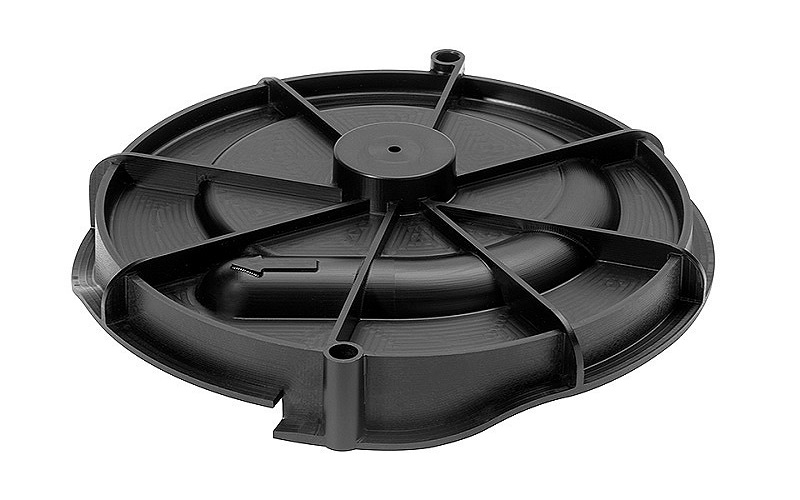
What Are The Limitations Of Acetal Polymer?
Firstly, POM exhibits poor resistance to strong acids, alkalis, and oxidizing agents, particularly in acidic environments (pH < 4), where degradation is more pronounced, especially in homopolymer POM.
Secondly, its thermal stability is limited; it tends to decompose and release formaldehyde gas at high temperatures (above 220°C), demanding strict processing controls.
Additionally, POM has weak UV resistance, leading to surface chalking and performance decline under prolonged sunlight exposure unless UV stabilizers are added.
In terms of impact toughness, POM underperforms compared to tougher plastics like PC or PA, especially at low temperatures or in notched conditions.
Lastly, its high crystallinity can result in uneven shrinkage during molding, complicating mold design and process optimization.
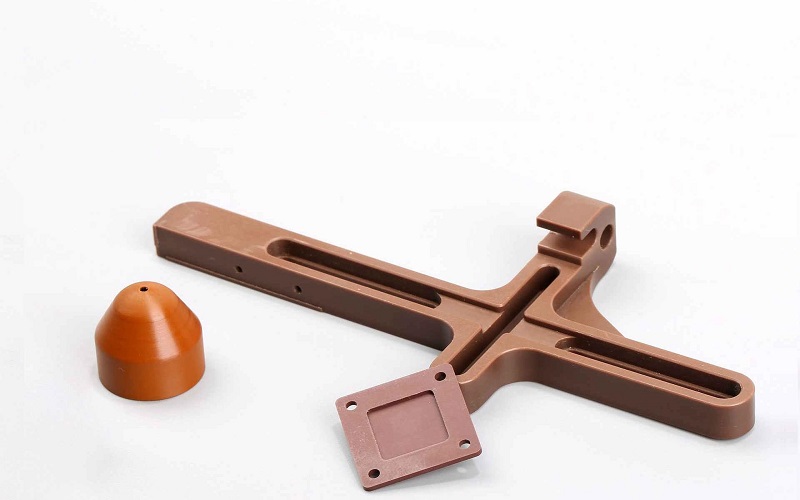
How To Produce POM Resins?
POM resins are produced by the polymerization of purified formaldehyde [CH 2 O]. However, different manufacturing processes are used to produce the homopolymer and copolymer versions of POM.
Homopolymerization Method
The homopolymerization method uses formaldehyde as the monomer, which is catalytically polymerized in an inert solvent with a cationic catalyst, followed by end-capping treatment. The specific steps include:
Preparation of Formaldehyde: Formaldehyde is prepared from methanol, then concentrated and purified to obtain high-purity formaldehyde.
Polymerization Reaction: High-purity formaldehyde is introduced into an inert solvent and catalytically polymerized under the action of a cationic catalyst.
End-Capping Treatment: Acetic anhydride is used to esterify and cap the terminal hydroxyl groups, producing thermally stable polyoxymethylene (POM) homopolymer.
Granulation: Additives such as curing agents and antioxidants are incorporated to produce the final homopolymerized polyoxymethylene product.
Copolymerization Method
The copolymerization method involves the ring-opening polymerization of trioxane and dioxolane to produce a POM copolymer. The specific steps include:
Raw Material Preparation: High-purity trioxane and dioxolane are used as the primary raw materials.
Ring-Opening Polymerization: Under the action of an initiator (e.g., boron trifluoride diethyl etherate complex), trioxane and dioxolane undergo ring-opening polymerization.
Polymerization Reaction: A POM copolymer is generated.

Modified POM
POM can be modified with additives & reinforcing materials to achieve increased impact resistance and strength as well as optimised tribological properties.
The primary methods of POM modification include the following:
Filled Modification
Filled modification involves incorporating inorganic or organic fillers—such as aluminum oxide, carbon fiber, or talc—into POM to improve its strength, stiffness, hardness, heat deflection temperature, and dimensional stability.
This approach is commonly used to produce complex mechanical structures, thin-walled precision components, and engineering products. While filled modification can reduce raw material costs, it may compromise certain properties, such as wear resistance.
Glass Fiber Reinforced Modification
Adding glass fiber to POM can significantly enhance the mechanical strength of the resulting composite, increasing it by 2 to 3 times, while also improving dimensional stability and raising the heat deflection temperature by more than 50°C. However, this method tends to reduce wear resistance to some extent.
Chemical Modification
Chemical modification involves introducing new monomers during the synthesis of POM, grafting molecular segments with specific functionalities onto its polymer chains to alter its properties.
For instance, incorporating lubricious segments can enhance POM’s wear resistance and self-lubricating properties, while adding weather-resistant segments can improve its weatherability and aging resistance.
Physical Blending Modification
Physical blending modification entails mixing POM with other polymers or additives to enhance specific properties.
Common techniques include adding high-molecular-weight materials like PTFE, HDPE, or UHMWPE as lubricants to reduce POM’s friction coefficient and wear rate, or incorporating rubber or elastomers as toughening agents to improve its toughness and impact resistance.
Surface Modification
Surface modification involves coating the POM surface with a layer of material that provides specific functionalities, thereby improving its surface properties.
Typical methods include plasma spraying, chemical vapor deposition, and electroplating, which can create a protective layer on POM that is wear-resistant, corrosion-resistant, or oxidation-resistant.
Processing Methods Of POM Material
POM Polyacetal resins are supplied in a granulated form. They can be molded into a desired shape by applying heat and pressure.
Injection molding and extrusion are the most commonly used methods for POM processing.
Injection Molding
Injection molding is a widely adopted method for fabricating POM components due to its efficiency and precision.
In this process, POM pellets are heated to a molten state and then injected under pressure into a mold. Once inside the mold, the material cools and solidifies, taking on the desired shape.
POM Injection Molding excels in high-volume production and is particularly suited for creating intricate geometries with tight tolerances, making it a preferred choice for complex, precision-engineered parts.
Extrusion
Extrusion is employed to produce semi-finished POM products, such as sheets, rods, pipes, filaments, and profile sections.
During this process, molten POM is forced through a die to form continuous shapes, which are then cooled and solidified.
They are further machined using traditional methods such as turning, milling, drilling, etc. to form finished parts.
Extrusion is valued for its ability to produce consistent, uniform profiles that can be tailored to specific applications through further processing.
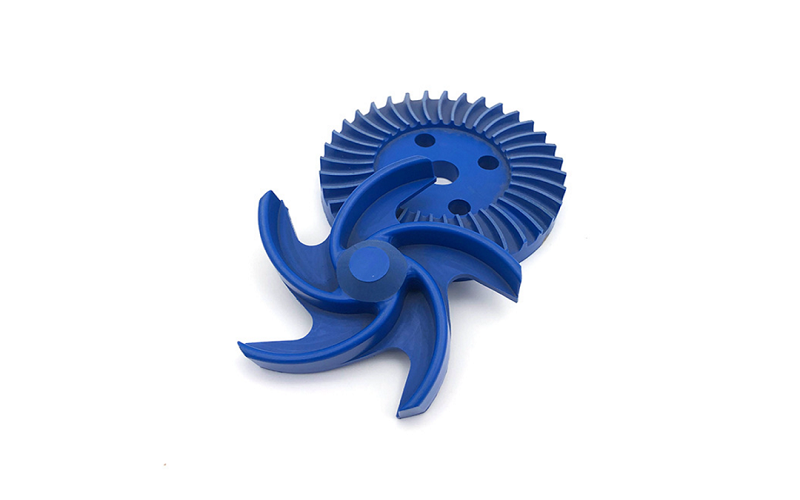
Is POM Plastic Food Safe?
Whether POM (polyoxymethylene) plastic is food safe depends on the specific formulation and any additives used in its production.
In its pure form, POM is a strong, durable, and chemically resistant engineering thermoplastic with low water absorption, making it an attractive material for certain food-related applications. However, not all POM is inherently food safe.
Standard POM may contain stabilizers, lubricants, or other additives that are not approved for food contact. If these additives are present and not food-grade, the material could pose a risk of chemical migration into food, especially under heat or prolonged exposure.
POM’s good chemical resistance and low water absorption make it ideal for use in contact with foods, such as in conveyor belts, food processing equipment components, or kitchen utensils (e.g., gears, handles, or fittings).
These properties, combined with its excellent dimensional stability, enhance its suitability for such environments. However, pom molding manufacturers must explicitly label it as food-safe for these uses.
Even food-grade POM has limitations. It is generally stable at moderate temperatures, but extreme heat (e.g., above its melting point of around 165–175°C) could degrade the material and potentially release harmful substances.
Thus,POM plastic can be food safe, but only if it is a food-grade variant explicitly certified by regulatory bodies like the FDA or equivalent standards (e.g., EU Regulation 10/2011 in Europe).
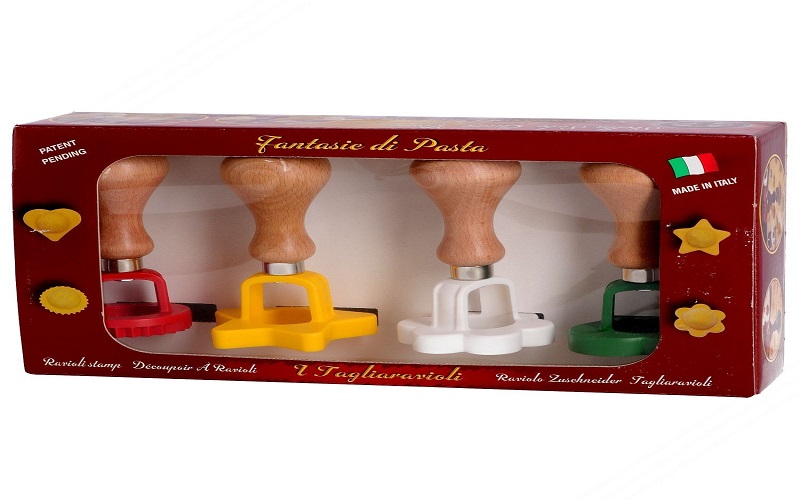
Applications Of POM Plastic Products
Automotive Industry
POM’s remarkable strength and superior abrasion resistance make it an ideal material for a variety of automotive components.
It is commonly employed in instrument panels, bushings, seat adjusters, armrests, door handles, and knobs, where its durability and wear resistance ensure long-lasting performance under frequent use.
Industrial Machinery
POM plastics are renowned for their exceptional mechanical strength, particularly their impressive tensile strength, which enables them to endure substantial loads and resist deformation effectively.
This robustness makes POM a cornerstone in industrial applications, where it is widely utilized in components such as gears, bearings, rollers, guides, and structural parts, delivering reliable performance under demanding conditions.
Fuel System Parts
POM’s toughness and chemical resistance suit fuel lines, rails, pump housings, valves, and sensor components.
These components benefit from POM’s durability and performance in varying environmental conditions.
Medical Devices
With pom’s biocompatibility and ability to withstand sterilization, POM is an excellent choice for medical applications.
It is frequently used in the handles and housings of surgical instruments, providing a combination of strength, precision, and safety for critical healthcare tools.
Sports And Recreational Equipment
POM plastic is used in sports and recreational equipment due to its impact resistance, toughness, and low friction properties.
Items such as ski bindings, bicycle components, archery equipment, and fishing reels often use POM, providing durability and reliability in active use.
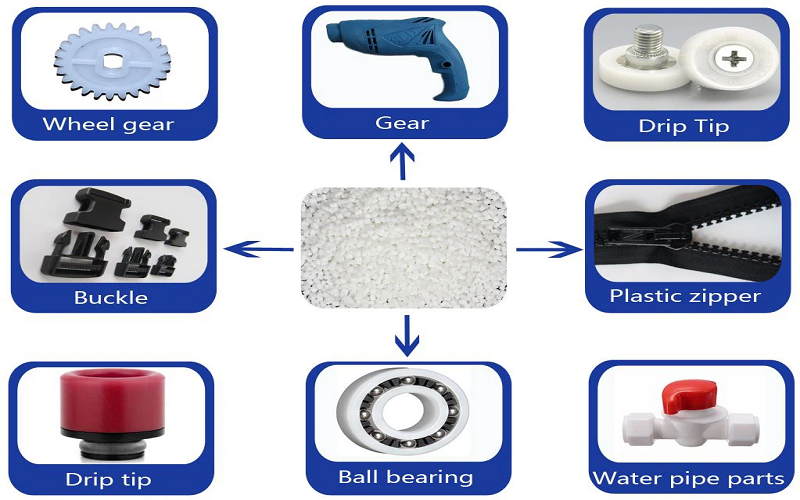
Conclusion
As a semi crystalline engineering thermoplastic, polyoxymethylene is known for its excellent mechanical strength, chemical resistance and low friction properties.
The versatility of POM is enhanced through a variety of modification techniques such as filling, chemical grafting, blending and surface coating to meet the diverse needs of a wide range of industries, from automotive and industrial machinery to plumbing, medical devices and sports equipment.
Whether it’s carrying heavy loads in gears and bearings, resisting corrosion in fuel system components and plumbing elements, or delivering precision and durability in surgical tools and recreational equipment, POM consistently delivers reliable performance under varying environmental conditions.
This combination of robustness, adaptability, and efficiency cements POM’s status as a cornerstone material in modern engineering and manufacturing applications.
